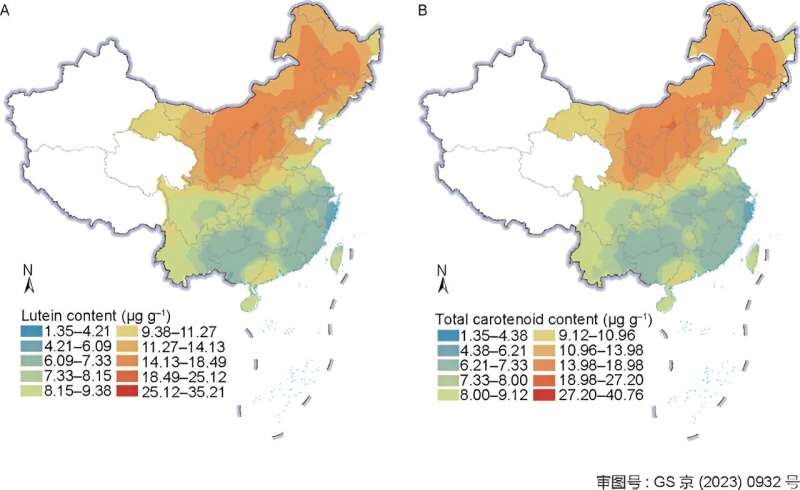
In a study published in the Journal of Integrative Agriculture, researchers from the Chinese Academy of Agricultural Sciences conducted an in-depth analysis of over 1,000 diverse soybean accessions from China, honing in on the levels of beneficial carotenoids.
This study has significantly advanced the understanding of soybean nutrition. By delving into the complex patterns of carotenoid and chlorophyll concentrations, the team aimed to determine how elements such as genotype, planting year, seed cotyledon color, and regional origin influence these essential nutrient contents.
The study conducted a comprehensive determination of carotenoid and chlorophyll concentrations across diverse soybean samples, revealing pronounced variations. Notably, traditional landrace soybeans exhibited higher carotenoid levels than cultivated varieties, with green cotyledon soybeans containing elevated carotenoids and chlorophyll compared to yellow cotyledons.
Lutein, making up 95.37% of total carotenoids, emerged as the dominant carotenoid, reaffirming its prevalence in prior studies. Furthermore, the study highlighted the significant influence of both genetic and environmental factors on these variations, with soybeans from China’s Huang–Huai–Hai Valley region showcasing notably higher carotenoid concentrations.
A key insight was the observed correlation between carotenoids and other nutritional traits, suggesting the potential for enhancing specific nutrients through strategic breeding without affecting others. For instance, a positive correlation was identified between lutein and α-tocopherol. Additionally, geographical differentiation in carotenoid levels was evident, with concentrations decreasing towards southern latitudes.
Overall, these findings underscore the potential of both genetic and environmental factors in shaping the nutritional profiles of soybeans, offering invaluable insights for future breeding endeavors aimed at enhancing soybean nutritional value.
The exhaustive research offers a pivotal advantage for breeders. Armed with insights into soybeans that inherently boast elevated carotenoid concentrations, breeders can now cultivate superior soybean variants. This advancement not only satisfies the growing consumer appetite for nutritionally enriched foods but also enhances the market’s valuation for producers.
In summary, even though soybeans weren’t traditionally deemed major sources of carotenoids, their latent potential for carotenoid enrichment is undeniable. The elite soybean accessions identified in this study could reshape breeding methodologies, ushering in a revolutionary wave of nutrient-dense soy products for global consumers.
More information:
Berhane S. GEBREGZIABHER et al, Natural variations and geographical distributions of seed carotenoids and chlorophylls in 1 167 Chinese soybean accessions, Journal of Integrative Agriculture (2022). DOI: 10.1016/j.jia.2022.10.011
Provided by
Chinese Academy of Sciences
Citation:
Unveiling the potential of soybeans for enhanced nutrition (2023, October 23)
retrieved 23 October 2023
from https://phys.org/news/2023-10-unveiling-potential-soybeans-nutrition.html
This document is subject to copyright. Apart from any fair dealing for the purpose of private study or research, no
part may be reproduced without the written permission. The content is provided for information purposes only.
